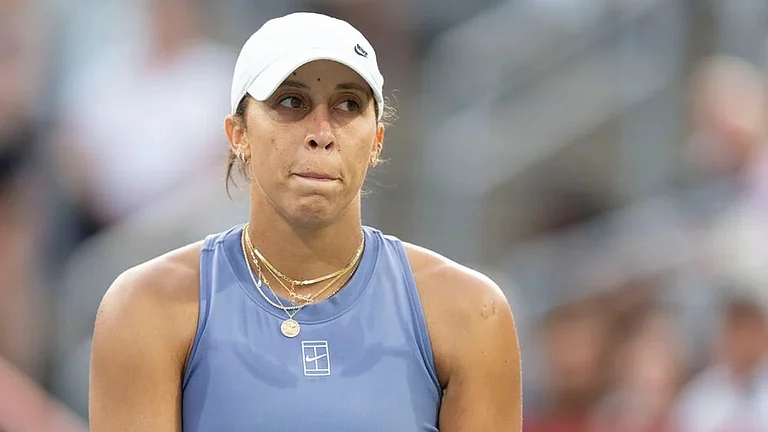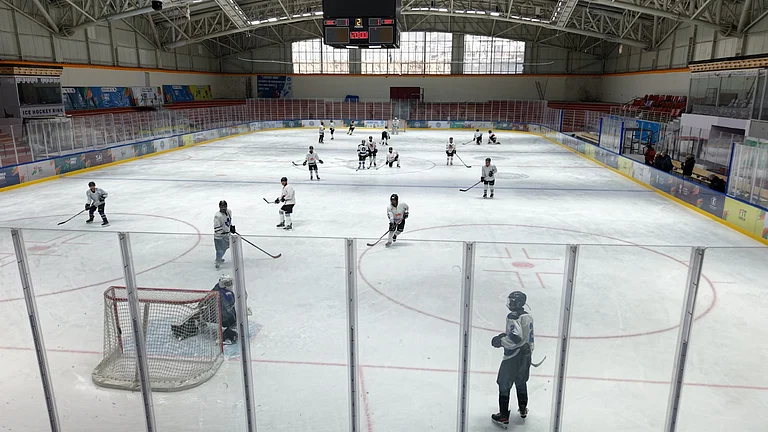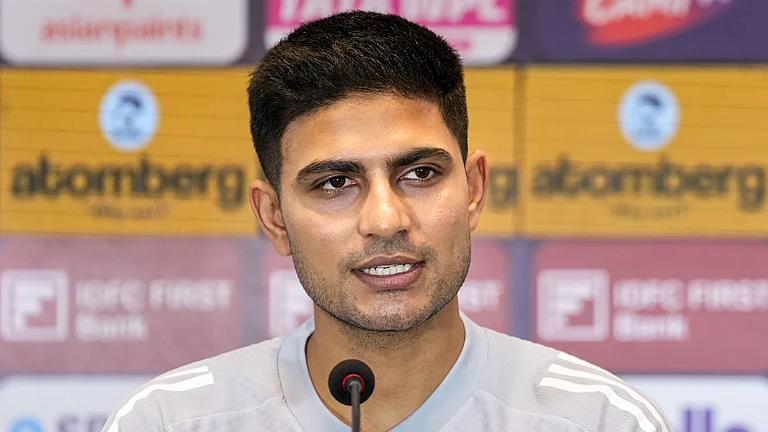This is an edited version of the conversation that took place on stage with the poet, Kiriti Sengupta, on 16 March 2023, at Mulk Raj Anand Auditorium, Department of English and Cultural Studies, Panjab University, Chandigarh.
Akshaya Kumar: Some tend to think that poetry has an obligation to strike a high octane and that it must attain some level of scriptural profundity. Some others tend to approach poetry as a discourse of engagement with ‘this’ life without any gloss. Should poetry be metaphysical or scriptural? Can it be purely ideological? Can it be purely activist? So, between these two kinds of extremes, one, wherein poetry is pitched into that quasi-sacred, quasi-metaphysical zone; other, wherein it is assigned an interventionist role, an instrumentality of sorts—the contemporary poet has to make all kinds of negotiations. So, my first question is: how do you retrieve poetry from these divergent pulls? One of your earlier books, Reflections on Salvation, was a kind of rewriting of the Gita. Eighteen chapters of the Gita, and you matched them with your eighteen small snippets, verses, and correspondences. All are very subversive, and it was very brave on your part to do that. So, what is your preferred zone—poetic spiritualism or poetic activism?
Kiriti Sengupta: Readers mark me for my short verses. They know I don’t feel comfortable on stage. I have stage fright. At public appearances like this, I say, “I am nervous.” So, my answers will be brief, if not cryptic. But, I must add to your observation: unlike other genres of literature, poetry must depict the truth. No other genres have this compulsion. Therefore, when someone writes a protest poem, a love poem, or a verse soaked in the nectar of philosophy, a poem is truth, nothing else.
Akshaya: That makes my task very difficult. Your brief answers would leave many things unsaid, which is very political. Writing poetry can be an act of speaking minimally, but conversations can be very garrulous.
Kiriti: If I may interrupt, even my Facebook friends know my minimalist updates. So, my answers will be layered. And I leave it to the audience to unveil the layers—to derive meanings that change with context. Poetry enjoys multiple interpretations, but it is all about truths.
Akshaya: But truths have their own politics. Your truth may not be my truth. Do you envisage some universal truth here? Also, truths are bare, more philosophical than poetic.
Kiriti: I think “truth” isn't a singular word. It’s always “truths”. There are several truths. What appears as truth to me may not be true to you or others. So, there cannot be a single truth. I remember a critique of my book, Rituals, which was featured in The Critical Flame. It said, “Sengupta’s poetry is far removed from so-called divine seeking. His poems are more akin to the Upanishads—they observe, analyse, probe deeper into the very essence of phenomena, and then raise questions that remarkably look out for truths. I say truths and not The Truth because Sengupta is aware that there exists not a single truth, but multiple meanings that can be drawn from the essence of our reality.”
Akshaya: Does your commitment to truth liberate you from the obligation of poetic aesthetics? Truth could be very blunt.
Kiriti: Truths are non-aesthetic. Commonly, they are ugly. So, you cannot craft a poem aesthetically if you are dealing with the spectacle of life, society, or a human being. But, there comes craftsmanship—you have to create and fabricate a particular form that should read and look decent. Poetry is also a form to look at, observe, and explore. I am blessed with a few mentors. They are the ones who keep telling me, “Work on your language, work on your craft. You have a voice. But remember, poetry is not all about your voice.”
Akshaya: You refer to mentors. How intimate is your relationship with Tagore? Do you cherish the overarching influence of Tagore on Bengali imagination?
Kiriti: I am hugely influenced by the unputdownable Rabindranath Tagore, and I don’t think I can ever come out of his expanded aura. I am in awe of him. I remember my book, Healing Waters Floating Lamps, published in 2015, was dedicated to Tagore, and eventually, it fetched the Tagore Literary Prize in 2018.
Akshaya: My question is slightly different. When you have a towering Tagore on the landscape, it may intimidate the new young budding poets. When a big tree is around, the smaller trees suffer existential crisis. Let me give one instance. In Punjab, we have one very formidable writer Amrita Pritam. And she has been such a huge poet that any woman poet who has written after Amrita Pritam struggles hard to make the mark. She is at once compared with Amrita. So, do you ever have this insecurity of being compared to Tagore?
Kiriti: No. I write in English. That’s my primary language. Tagore is a Bengali lyricist, writer, and poet. He represents an era. There are several prominent Bengali poets. They are not compared to Tagore. As I write in English, the comparison is out of the question.
Akshaya: Besides Tagore, there must be many more influences on you. Bengal has seen the rise of Marxism and then the Naxalite movement. So, when you say mentoring…is this mentoring as prolific as heterogeneous?
K. Sengupta: Yes. If you are keen to learn, you can achieve understanding from varied sources. It depends on how focused you are on learning new traits. I firmly believe poetry can hardly be taught or learned in a formal space. So, all that matters is your zeal to mature your craft and voice and your urge to evolve as a poet. My mentors aren’t limited to Calcutta; one of my mentors, Sanjeev Sethi, lives in Mumbai.
Akshaya: Who among the contemporary Indian English poets can you call an influence? Or let me put it differently—is there any Indian English poet you would like to co-partner with?
Kiriti: Although I have never worked with or collaborated with him on a project, Satya Dash is a poet from Bangalore with whom I would love to associate. He is one of the finest Indian poets writing in English in our time.
Akshaya: Okay. So, even when it comes to Indian English poetry, don’t you think that Calcutta, which had once taken the lead, has fallen behind now as the hub of Indian English poetry? For example, Pritish Nandy’s famous poem “Calcutta If You Must Exile Me” almost acquired anthemic proportions.
Kiriti: It’s a Kolkata-based love poem, but I’m unsure if Pritish Nandy is considered a Kolkata poet.
Akshaya: You agree that Bombay has been the dominant center of Indian English poetry. Now Bangalore and Delhi are also emerging as the new hubs of poetry. Don’t you think Calcutta lost the steam somewhere? You and your publisher Hawakal seem to bring Calcutta back into the poetry scene. What is your assessment?
Kiriti: A publisher has limited scope to change the literary map of a particular state or city. It’s not feasible to work with all contemporary poets. Calcutta or West Bengal are marked explicitly for Bengali literature that enjoys a long legacy—a prolific heritage. But if Bengali poetry is not sufficiently translated into English or other foreign languages, it will lose a global audience. As far as Indian poetry in English is concerned, Hawakal has worked with several prominent and emerging Calcutta poets.
If I can name a few, Hawakal published Sharmila Ray, a well-known senior poet in the city. Hawakal launched Nikita Parik, a Charles Wallace Fellow (2023) at the University of Stirling (Scotland), among the younger poets. Last year, three Hawakal titles were nominated for the Tagore Literary Prize (2021-22): The Elegant Nobody by Jagari Mukherjee, Osmosis by Debarshi Mitra, and My City is a Murder of Crows by Nikita Parik. Among them, Jagari and Nikita are young Calcutta poets. Also, Sufia Khatoon's Death in the Holy Month was nominated for the Sahitya Akademi Yuva Puraskar in 2020 and again in 2022. So, there is no dearth of competent poets writing in English in Calcutta. This year, at the New Delhi World Book Fair, Hawakal launched Rajorshi Patranabis’s The Last Drop of Your Tears, supposedly the world's first-ever book of gogyokha poems in English by a single author. Rajorshi is a Calcutta poet. I hope you understand the marked indifference to Calcutta poets writing in English. Sad but true!
Akshaya: I was talking about the near absence of Bengali poets in Indian English poetry.
Kiriti: I can name quite a few poets from Calcutta. You must be aware of Sanjukta Dasgupta, one of your senior colleagues. Hawakal released three of her significant poetry books: Lakshmi Unbound (March 2017), Sita's Sisters (November 2019), and Indomitable Draupadi (November 2022). Well, I talked about Sharmila Ray before. Other prominent Bengali poets (writing in English) are Gopal Lahiri, Kushal Poddar, Mallika Bhaumik, and Amit Shankar Saha, to name a few. All these poets have their share of critical acclaim. So, there is no shortage of Bengali poets in Indian English poetry.
Akshaya: Look at the contribution of P. Lal and his Writers Workshop. All those poets who later became Bombay poets started with Writer’s Workshop. How come the Writers Workshop ended up creating poets outside Calcutta and not in Calcutta?
Kiriti: You are talking about an era when only a handful of Indian poets used to write in English. Also, not many publishers were interested in poetry back then. P. Lal and his Writers Workshop (WW) helped poets from different parts of the country. They approached WW for their books, and Prof. Lal was highly cautious about what he would publish. In those days, WW published a few Calcutta poets as well. However, with the emergence of several independent presses in India and their adherence to state-of-art modern technology, poets outside Calcutta found better avenues to launch their books. As I said before, Calcutta boasts the legacy of Bengali literature, and I wonder if the poets in Calcutta consider it convenient to go out of their comfort zones to showcase their work.
Akshaya: So, when I read your Water Has Many Colors and Rituals, should I read you as a Bengali English poet or an Indian English poet?
Kiriti: This is an excellent question: I've always maintained —I am a Bengali English poet. No two ways about it. Regardless of my first language in school, my mother tongue is Bangla. I am Bengali by heart, and when I write English poems, they exude my ethnic sensibilities. I was raised in typical Bengali ways in a hardcore Bengali household. Also, my poems often talk about local culture and lifestyle traits. So, I'm more comfortable with a tag of a Bengali English poet than being marked as an Indian English poet.
Akshaya: Are you in a way delimiting your own canvas?
Kiriti: I categorically mentioned my stand in My Glass of Wine (2013), one of my initial books. It becomes my duty as a writer to make readers aware of Bengali culture. It’s been spontaneous on my part; I never deliberately tried to demarcate my canvas. In a recent interview, fellow poet, translator, and publisher (founder of Red River) Dibyajyoti Sarma said, “Personally, for me, I think, I write Assamese poetry in English. Apart from the language, my aesthetics is influenced by the Assamese poets that I read growing up, those who inspired me to write poetry.”
Akshaya: So, the water that flows in the poetry is the Ganga that flows in Bengal and not the rest of Ganga that flows throughout North India? How do you then demarcate your water? When you give your poetry a regional veneer or circumscribe it within regional coordinates, are you not reducing the shades and stretch of water?
Kiriti: If you are religious, you show the same honor to the Ganges regardless of the location. But when you consider the Ganges merely as a river—an uninterrupted flow of water—it isn’t the same across its path. Water tends to absorb the earth's color, odor, and properties it passes over. Can you deny that? So, when I focus on regional nuance, I don't curtail the shades and stretch of the water, as you hinted. On the contrary, I work on adding to its depth. When you read my poem, “Game,” you will find my take on Sindur Khela, a tradition married women observe on the final day of Durga Puja—Bijaya Dashami. Let me read the poem; it's on page 89:
Women arrive
with a pot of vermillion
as the goddess departs.
Akshaya: We may have variants of this ritual in Ganesh Chaturthi...in Ganesh Visarjan, and that way, this game is a pan-Indian game.
Kiriti: Of course, it is relevant across the country. But who said Sindur Khela was confined within Bengal? The ritual is observed with the same gusto worldwide—anywhere Durga Puja is celebrated. Most interestingly, unmarried women and men (to an extent) participate in this act of bidding adieu to goddess Durga nowadays.
Akshaya: So, you reiterated that you tend to speak less. But you have not talked that less.
Kiriti: I don't speak much on stage, as I said before. But when the questions were plenty, you ought to speak more than you expected.
Akshaya: Okay. But your poems are very laconic in that sense and very terse. So, there is, in a way, a definitive sharpness to the idiom. If you look at it from another angle, there must be a sustained play of the metaphor. After all, single-liners are good occasionally, but if it becomes a habit, as it becomes a habit in your case, the fun of playing with the metaphor is short-circuited.
Kiriti: There are four or five monostichs in Water Has Many Colors. Monostich is just another form. Oh well, I’m not addicted to it. Poetry is essentially the condensation of thought. I should try prose if I cannot express myself in fewer words. That’s a safe bet!
Akshaya: That’s true. Condensation is alright, but would then silence be your last poem?
Kiriti: Poets appreciate silence more than anything. It is worldly as well as divine. Silence speaks to you in quietude. I wish I could write silence someday. Another monostich, maybe. Who knows? (Everyone laughing)
Akshaya: So, because when I read these short arrow-sharp poems, they hit hard. And some of them actually talk back to you, and you then reflect over and give it its possible length as a co-creative reader. But, sometimes, you feel that the poetic endeavor is left abandoned mid-way.
Kiriti: It is hard to say where you can find poetry. Does it dwell in the lines of a poem, or the lines not written but readers can make out? To me, poetry lies in the aroma of the lines, the images readers build upon the poem they read, and the air of the words, which strikes a chord. Hearing that some of my poems talk back to you is satisfying. And it is even more critical that you make that effort to reflect on my lines. What more can I expect from my reader? As Paul Valery said, “A poem is never finished, only abandoned.” Do you think one can quickly become a poetry reader? We must remember we aren’t dealing with newspapers: you wake up one fine morning and start reading the front page, randomly surfing through the headlines. Reading poetry isn’t a cakewalk: it takes discipline, practice, time, and perseverance. That is why we call them “initiated” readers.
The monostich poems I included in Water Has Many Colors were first published in Dreich magazine (Scotland). When Jack Caradoc, the editor, accepted these pieces, I was pleasantly surprised, for those were the first few single-line verses I had written. Please allow me to read a few monostichs. I’ll begin with “Prayer” on page 59:
What if I am mute or loud?
Prayer manifests your faith—an expression of your desires or wishes. So, it hardly matters if one is soundless or vocal.
The next monostich is “Covid-19” on page 61:
Breathing banks on black market.
We are now aware of the Covid-19 virus and how it affects the respiratory system of otherwise healthy individuals leading them to an acute condition of breathlessness. I remember how many patients in India suffered severely from the shortage of oxygen cylinders sold at an exorbitant price. Indian government couldn’t relax the crisis. On the other hand, the pandemic situation helped grow brokers and agents who negotiated life for a fee. Moreover, the sound effect of this monostich—placing three words that begin with a 'B'—may excite the eardrum when read aloud.
I expanded my views on the pandemic in “Celebrations” on page 65:
Zero tolerance for outdoor missions.
Remember our time during the complete lockdown phases—“Stay home. Stay safe.”—was the official slogan the World Health Organization and local administration propagated. We weren’t even allowed to venture outside. Remaining confined within the four walls of the house—the so-called “social distancing” took a toll. It badly influenced our mental health. “Celebrations” bears a hint of sarcasm.
Akshaya: Even otherwise, because when you write two-liners or three-liners, why don’t you try the standard forms like haiku, quatrain, and sonnet?
Kiriti: I tried sonnets. I wasn’t happy; the sense was lost somewhere in the form. Although haiku isn’t my domain, I’ve written a few that are awaiting publication. Free verses are also a standard pattern; formlessness is also a form. As far as monostich is concerned, writing one isn’t easy. It’s a different ballgame altogether.
Akshaya: Because, if you look at Indian English poetry, particularly from 2020 onwards, poets use forms with precision and confidence. Ghazal is, for instance, a new craze. Classical ghazal is very subdued; there is no loud voice. What about Agha Shahid Ali? I hope you appreciate his art of writing the ghazals.
Kiriti: Agha Shahid Ali identified himself as an American poet. His contribution to ghazals is considered exemplary. However, is English the language for writing ghazals? Ghazal, as I perceive it, sounds better in Urdu and Hindi. But wait, I am not an expert; my comments may stir up controversy.
Akshaya: But in your book, I noticed that the single-liners or the otherwise minimalistic poems, as it is called, have an architecture to them, and you create some reversals. For instance, instead of you looking like your father, your father looks like you. There is a poem where you say, “Pearls find a way/back to the oysters.” In another verse, you write, “Strays recognize the regulars.”
Kiriti: I don’t create them deliberately. They arrive, and later, I fine-tune them to fit into my poems. Editing poetry is challenging. All my poems pass through several finishing rounds before I present them to the world. One of my mentors, Ranadeb Dasgupta, advised me long ago: “Ensure that the veil you employ isn’t opaque and it should allow your readers to see through it.” Again, Sanjeev Sethi points at the language, crafting, and, most importantly, eloquence. Their suggestions helped my work mature and backed my evolution as a poet.
Akshaya: And I said that there are reversals, paradoxes, and ironies. You change the sequence of time, what comes later comes first, and what should have come towards the end, comes right at the beginning. Can poetry work otherwise? Is this the very innate nature of your poems? Poetry as a form itself. How else would you write a poem if you don’t bring in ironies and paradoxes?
Kiriti: Are you pointing at my diction? My style? My voice? As I said before, I never write a poem for the heck of it. If it does not arrive spontaneously, I would refrain myself from writing a single line. I write little, and I have a purpose when I write poetry. I can’t write aimlessly. My poetry should raise questions; it should make you look at ironies and paradoxes with fresh eyes, which you may have considered trivial. My poems should add perspectives.
Akshaya: I am simply stunned by the deft reversals that you bring in phrases like “Slumber unfolds its arms as it wakes up”.
Kiriti: I am not a linguist. Nor do I intend to juggle words. It’s the end of your sleep cycle when you wake up in bed. But, as I said, my poem must allow you to envision an act from a fresh angle.
Akshaya: Poetry can afford to postpone the union of the soul or the super soul. But what is more important is its tryst with the mundane. In your poems, you do engage with the mundane, but there is always an anxiety to discover the classic in this mundane.
Kiriti: I find mundane affairs timeless. Be it the resonance my mother’s bangles create, the silence my wife maintains as I argue with her, or my routine advice to my son as he falls from his bicycle, there is classicality in them. Please allow me to read from “Classic”. It’s a long piece comprising seven short verses. These poems aren’t connected with each other, but they will share my understanding of perennialism.
The first verse in the series is “Ma” on page 69:
In the kitchen,
her bangles
play a carillon.
The second verse is titled “Missus” on page 71:
My falling-out
fails to furcate.
Her silence, the shield.
The third poem is “Baba” on page 73:
My son tumbles.
Get back
on your toes,
I tell him.
The next piece is “Housekeeper” on page 75:
Climbing the stairs,
he calls my mother.
His voice reverberates.
Laundryman is at the door.
Akshaya: As you read these poems, I notice that the entire burden of poetry is on the line you write. There are no sustained symbols or motifs as such to provide you with some solid architecture. What do you say? The opening poem “Spectrum” is all about water and its shades: “Water has many colors/smudging pebbles/along its path.” But after that, the image of water recedes, and other images take over.
Kiriti: Yes, but I chose various poems for Water Has Many Colors as they reflect on multiple shades of life.
Akshaya: In “Freehold”, you once again bring the image of water in the form of rain. And you indeed capture the rain-umbrella duality in a playful manner. You have so many terms for the umbrella— “brolly”, “gamp”, “parasol”, and “canopy”. What is the purpose of using these synonyms? In another poem, you use different words for dogs, like “strays”, “mutts”, and “curs”. Is it deliberate?
Kiriti: Of course, that was deliberate. Sanjeev Sethi says, “Readers should also learn new words when they read literature.” He alerts me from repeating the same word in short poems.
Akshaya: There are related graphics in Rituals, also. So, do you think this is a practical necessity for your poems?
Kiriti: I like my work to be well-presented. Esthetically, my books should appeal to readers. I’m fond of paintings, sketches, and photographs. So, I handpick them and ensure they blend evenly with the themes and concept notes of the books.
Akshaya: Rituals should have been more colorful, no?
Kiriti: Rituals (2019) was conceptualized as a book in grayscale. My publisher (Bitan) adhered to it as he produced the book.
Akshaya: You have translated Bengali poets, and their poems have a lot of water and river imagery. In your translated work, Poem Continuous: Reincarnated Expressions, which contains poems by Bibhas Roy Chowdhury, the epigraph itself has water as its theme: “I swam across the river while/my body floated away in the water.” Does translation talk back to you?
Kiriti: Yes, they do. However, there is always a conscious attempt on my part to avoid getting influenced by the poetry I translate. My voice is important to me.






















